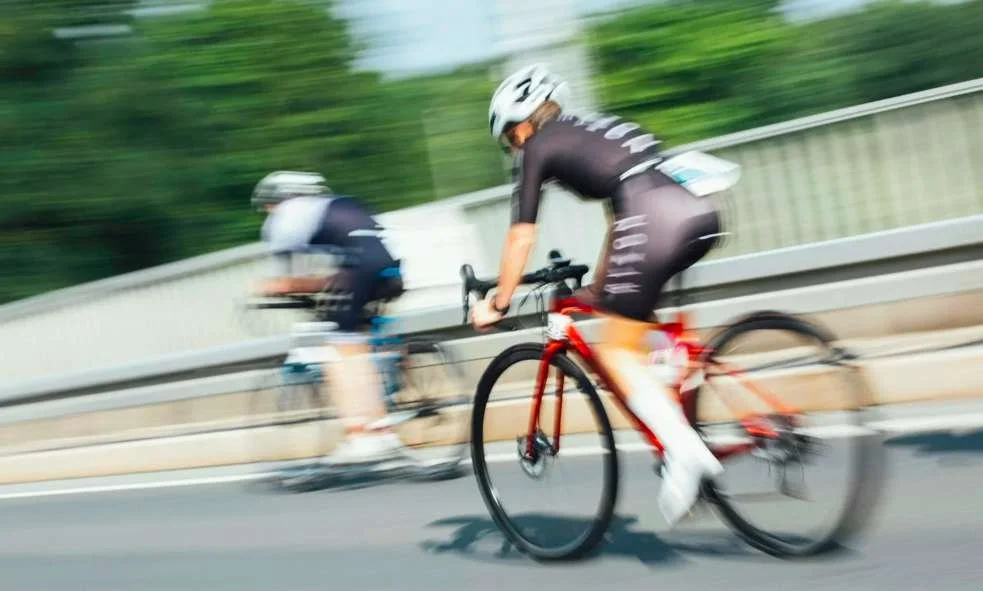
Triathlon Hub FAQ
-
Triathlon training combines swim, bike and run workouts to prepare athletes for races from sprint to Ironman distances.
-
Ironman triathlon distances are a 3.8 km swim, 180 km bike and a 42.2 km marathon run.
-
An Ironman 70.3, also called a Half Ironman, distances are a 1.9 km swim, 90 km bike and 21.1 km half marathon run.
-
A Super Sprint is the shortest triathlon distance: 400 m swim, 10 km bike and 2.5 km run.
-
A Sprint triathlon is a 750 m swim, 20 km bike and 5 km run.
-
An Olympic triathlon includes a 1500 m swim, 40 km bike and 10 km run.
-
Triathlon training zones are heart rate, power, RPE or pace ranges (Zone 1–5) that guide training intensity.
-
Zone 1 is recovery training: 68–73% of max heart rate, very light and easy effort.
-
Zone 2 is endurance training: 73–80% of max heart rate, used for long swim, bike and run sessions.
-
Zone 3 is tempo training: 80–87% of max heart rate, steady but controlled effort.
-
Zone 4 is threshold training: 87–93% of max heart rate, the limit where lactate is produced but still cleared.
-
Zone 5 is VO2 max training: 93–100% of max heart rate, short intervals at very high intensity.
-
FTP (Functional Threshold Power) is the highest power a cyclist can hold for 60 minutes and is used for training zones.
-
CSS (Critical Swim Speed) is the pace an athlete can hold for 1500 m and is used to set swim training zones.
-
Lactate threshold is the effort level where the body produces lactate but still clear it.
-
Brick workouts combine cycling and running in one session to prepare for race-day transitions.
-
Brick sessions help triathletes adapt to the heavy legs and fatigue that come after the bike before the run.
-
T1 is the first transition, from swim to bike.
-
T2 is the second transition, from bike to run.
-
Triathletes fuel with carbohydrates, fluids and electrolytes to sustain performance and avoid bonking.
-
Bonking is hitting the wall when glycogen stores run out, causing severe fatigue.
-
Before a triathlon, eat carbohydrate-rich foods like rice oats or bread to maximise glycogen stores.
-
Recovery includes Zone 1 training, rest days, sleep, hydration and balanced nutrition.
-
Tapering is reducing training volume before a race to allow the body to recover and peak on race day.
-
Tapers typically last 1–3 weeks, depending on the race distance.
-
Essentials include a wetsuit, goggles, bike, helmet, tri suit, running shoes and nutrition.
-
A tri suit is a one-piece suit designed for swimming, cycling and running without changing clothes.
-
Drafting is riding close behind another cyclist to reduce wind resistance. It is legal in short races but banned in Ironman.
-
A power meter measures cycling power in watts, helping athletes train by effort not just speed.
-
RPE (Rate of Perceived Exertion) is a 1–10 scale measuring effort without using gadgets.
-
An open water swim is done in lakes, rivers or the sea, unlike pool training.
-
Sighting is lifting your head to spot buoys and stay on course during open water swims.
-
Transition practice is rehearsing fast gear changes between swim, bike and run.
-
Cadence is how many pedal revolutions per minute a cyclist makes.
-
Running cadence is steps per minute, often targeted at 170–180 for efficiency.
-
Aero bars let cyclists rest their forearms and ride in an aerodynamic position.
-
Pacing means distributing effort evenly across swim, bike and run to avoid early fatigue.
-
A negative split is completing the second half of a race faster than the first.
-
Overtraining is when athletes train too much without recovery, leading to fatigue and performance decline.
-
Common injuries include runner’s knee, shin splints, Achilles tendonitis and shoulder strain.
-
Strength training includes gym or bodyweight exercises to improve durability and power.
-
Mobility exercises improve range of motion, posture and injury prevention.
-
A coach provides structured training plans, feedback and guidance for athletes.
-
Periodisation structures training into blocks: base, build, peak and race phases.
-
Polarised training means 80% easy Zone 1–2 sessions and 20% hard Zone 4–5 sessions.
-
Pyramidal training has more Zone 2, fewer Zone 3, and very few Zone 4–5 sessions.
-
Transition bags hold gear needed for each stage and help organize race day.
